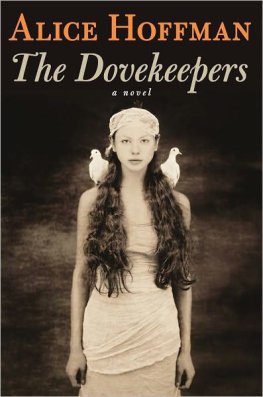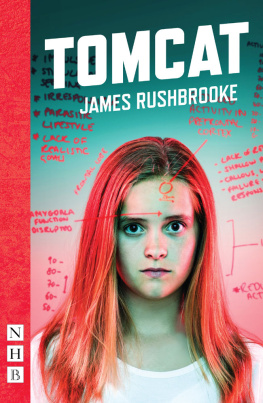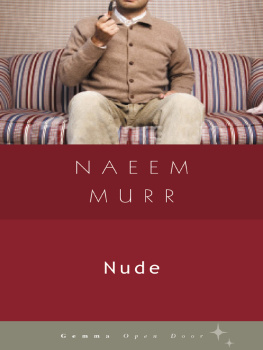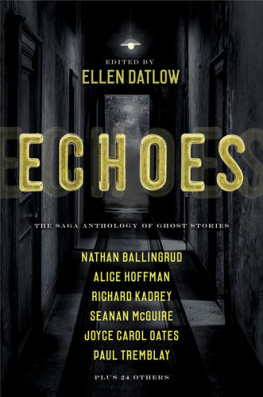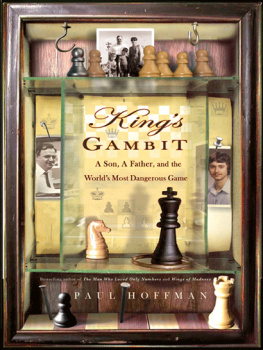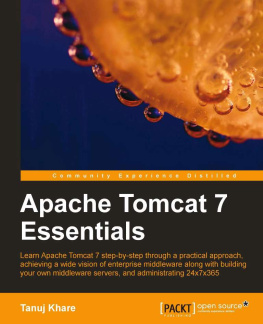E.T.A. Hoffman - The Life and Opinions of the Tomcat Murr
Here you can read online E.T.A. Hoffman - The Life and Opinions of the Tomcat Murr full text of the book (entire story) in english for free. Download pdf and epub, get meaning, cover and reviews about this ebook. year: 0, publisher: Penguin, genre: Detective and thriller. Description of the work, (preface) as well as reviews are available. Best literature library LitArk.com created for fans of good reading and offers a wide selection of genres:
Romance novel
Science fiction
Adventure
Detective
Science
History
Home and family
Prose
Art
Politics
Computer
Non-fiction
Religion
Business
Children
Humor
Choose a favorite category and find really read worthwhile books. Enjoy immersion in the world of imagination, feel the emotions of the characters or learn something new for yourself, make an fascinating discovery.
- Book:The Life and Opinions of the Tomcat Murr
- Author:
- Publisher:Penguin
- Genre:
- Year:0
- Rating:5 / 5
- Favourites:Add to favourites
- Your mark:
- 100
- 1
- 2
- 3
- 4
- 5
The Life and Opinions of the Tomcat Murr: summary, description and annotation
We offer to read an annotation, description, summary or preface (depends on what the author of the book "The Life and Opinions of the Tomcat Murr" wrote himself). If you haven't found the necessary information about the book — write in the comments, we will try to find it.
The Life and Opinions of the Tomcat Murr — read online for free the complete book (whole text) full work
Below is the text of the book, divided by pages. System saving the place of the last page read, allows you to conveniently read the book "The Life and Opinions of the Tomcat Murr" online for free, without having to search again every time where you left off. Put a bookmark, and you can go to the page where you finished reading at any time.
Font size:
Interval:
Bookmark:
PENGUIN  CLASSICS
CLASSICS
THE LIFE AND OPINIONS OF THE TOMCAT MURR
E. T. A. HOFFMANN was born in Knigsberg on 24 January 1776 and baptized Ernst Theodor Wilhelm Hoffmann; he later substituted Amadeus for Wilhelm out of admiration for Mozart. Having studied law, he entered the Prussian civil service and held a number of legal posts in the eastern Prussian provinces. His earliest ambition was to be a composer or a graphic artist and painter, and it was not until he was in his thirties that he turned to fiction, becoming one of the best-known and most influential authors of his time. Fantasiestcke , his earliest collection of tales, appeared in 1814. This was followed three years later by Nachtstcke and then in 1819-21 by the Serapions-Brder. Among his longer works is his second and final novel, Lebensansichten des Katers Murr (182022, The Life and Opinions of the Tomcat Murr) , which represents the high-point of his art. He exploited the grotesque and the bizarre in a manner unmatched by any other Romantic writer. Hoffmann died in Berlin on 25 June 1822.
ANTHEA BELL was born in Suffolk and educated at Somerville College, Oxford. She has worked as a translator for many years, primarily from German and French. Her translations include works of non-fiction (biography, politics, social history and musicology), literary and popular fiction, and numerous childrens books, including classic German works by the Grimm brothers, Clemens Brentano, Wilhelm Hauff and Christian Morgenstern. She has received many prizes and awards, including the Mildred L. Batchelder Award in 1979, 1990 and 1995; the 1987 Schlegel-Tieck Prize for Hans Bemmanns The Stone and the Flute ; and in 1996 the first Marsh Award for Childrens Literature in Translation for Christine Nstlingers A Dogs Life. Anthea Bell has also served on the committee of the Translators Association and the jury panel of the Schlegel-Tieck German translation prize in the UK. She lives in Cambridge and has two adult sons.
JEREMY ADLER is Professor of German at Kings College London. He studied German at Queen Mary College (University of London) and was a Lecturer in German at Westfield College before being awarded a Personal Chair. He is a sometime fellow of the Institute of Advanced Study, Berlin, and a sometime scholar of the Herzog August Bibliothek, Wolfenbttel. He has written a book on Goethes novel The Elective Affinities (1987), produced (with Ulrich Ernst) a catalogue of visual poetry, Text als Figur (3rd edn, 1990), and edited Hlderlins Selected Poems and Fragments for Penguin Classics. He also wrote the biograhpy Franz Kafka for Penguin Illustrated Lives (2001). He has published several volumes of poetry, including The Wedding and other Marriages (1980), The Electric Alphabet (1986; 2nd edn, 1996, internet edn, 1997) and At the Edge of the World (1995). Jeremy Adler is married and lives in London.
THE TOMCAT MURR
together with a fragmentary Biography of
Kapellmeister Johannes Kreisler
on Random Sheets of Waste Paper
Translated and annotated by ANTHEA BELL
with an Introduction by JEREMY ADLER
PENGUIN BOOKS
PENGUIN BOOKS
Published by the Penguin Group
Penguin Books Ltd, 80 Strand, London, WC2R 0RL , England
Penguin Putnam Inc., 375 Hudson Street, New York, New York 10014, USA
Penguin Books Australia Ltd, Ringwood, Victoria, Australia
Penguin Books Canada Ltd, 10 Alcorn Avenue, Toronto, Ontario, Canada M4V 3B2
Penguin Books (NZ) Ltd, Private Bag 102902, NSMC, Auckland, New Zealand
Penguin Books Ltd, Registered Offices: 80 Strand, London, WC2R 0RL , England
First published 182022
Published in Penguin Classics 1999
Translation and notes copyright Anthea Bell, 1999
Introduction copyright Jeremy Adler, 1999
All rights reserved
The moral right of the translator and the author of the introduction has been asserted
Except in the United States of America, this book is sold subject to the condition that it shall not, by way of trade or otherwise, be lent, re-sold, hired out, or otherwise circulated without the publishers prior consent in any form of binding or cover other than that in which it is published and without a similar condition including this condition being imposed on the subsequent purchaser
978-0-14-193731-1
E. T. A. Hoffmann is Germanys supreme story-teller. As such, he occupies a key place in the making of modern fiction. Others may have greater range or a better grip on social issues, but Hoffmann is unequalled in displaying the sheer joy of unbridled story-telling, with a voice that is friendly, cosmopolitan and humane. Moreover, in his hands, the strenuous ideas developed in early German Romanticism become infused into supple, fast-moving tales, peopled by a host of sharply-drawn, often comic characters. Figures like Anselmus, the clumsy student in The Golden Pot , Ren Cardillac, the demonic jeweller in Mademoiselle de Scudery , and the highly-strung composer, Johannes Kreisler, in The Tomcat Murr are both plausible individuals and living embodiments of Romantic ideas. With its brightly-painted characters and lively views linked by masterly plotting, the amusingly titled The Life and Opinions of the Tomcat Murr together with a Fragmentary Biography of Kapellmeister Johannes Kreisler on Random Sheets of Waste Paper shows Hoffmann at the height of his powers. His last great work, it is perhaps the most readable of all the German Romantic novels. It is certainly the funniest.
Hoffmanns writing vividly encapsulates the romantic fascination with the individual and the imagination, with both nature and the supernatural, and with art itself, yet sets these concerns into the humdrum bustle of everyday life. There, Hoffmann explores the bizarre, the fantastic, the ridiculous and the sublime. His characters are students, officials, courtiers and bureaucrats, men and women who must toil to earn their bread, beer and tobacco. Professionals priests, lawyers and doctors also people his world, as do servants and market-folk. And he scrutinizes the effete German aristocracy, too, who feature so prominently in The Tomcat Murr. Against the background provided by the three chief social classes represented by servants, bourgeoisie and aristocrats Hoffmann focuses on the exceptional characters, the artists and craftsmen, who belong nowhere and suffer the agonies inflicted on them by stifling social conventions because their insight sets them apart from other mortals, confronting them with the abyss that yawns between mundane reality and the infinite. Facing these two worlds, Hoffmann revels in contradiction. Rationally, he analyses the spirit, laying bare extreme psychic states and yet, giving way to the irrational, he seems to lose himself, probing the occult phenomena that lie at the penumbra beyond empirical experience. He delights in playing with gothic horror, yet humorously uncovers the myth that lies behind the sublunary world. Throughout, Hoffmanns narrators display such a warmth towards humanity, so welcoming an affection towards the reader, that they charm and beguile us, his dear readers, endearing to us the story-teller and his tale in the very act of ensnaring us in a frequently, but by no means always, fantastic world. In thus modulating Novaliss esoteric definition that Romanticism heightens the ordinary and concretizes the spirit (The world must be romanticized), Hoffmann renegotiated the relationship between the real and the supernatural. He handles writing as a flexible dialogue between fact and fantasy, and these are the thematic ingredients he mixes in ever-new and startling combinations. By inventing this method, and borrowing heavily from popular writing, he effectively re-wrote serious fictions contract with the reading public. Both urban realism and mythic fantasy achieve major formulations in his work. Hence his popularity with ordinary German readers in his day, and the distaste with which the contemporary lite, represented by Goethe, regarded him. Ironically, though, despite his dubious literary status, he was one of Germanys most popular writers. It was also in large measure via Hoffmann that early German Romanticisms aesthetic discoveries, notably the ideas of the Schlegel brothers, Novalis, Tieck and Wackenroder, as well as popularized versions of Romantic philosophy, based on Fichte and Schelling, reached a wider European audience. As Thomas Mann observed, writing in 1940, Hoffmann was the only nineteenth-century German writer to achieve European status.
Font size:
Interval:
Bookmark:
Similar books «The Life and Opinions of the Tomcat Murr»
Look at similar books to The Life and Opinions of the Tomcat Murr. We have selected literature similar in name and meaning in the hope of providing readers with more options to find new, interesting, not yet read works.
Discussion, reviews of the book The Life and Opinions of the Tomcat Murr and just readers' own opinions. Leave your comments, write what you think about the work, its meaning or the main characters. Specify what exactly you liked and what you didn't like, and why you think so.


